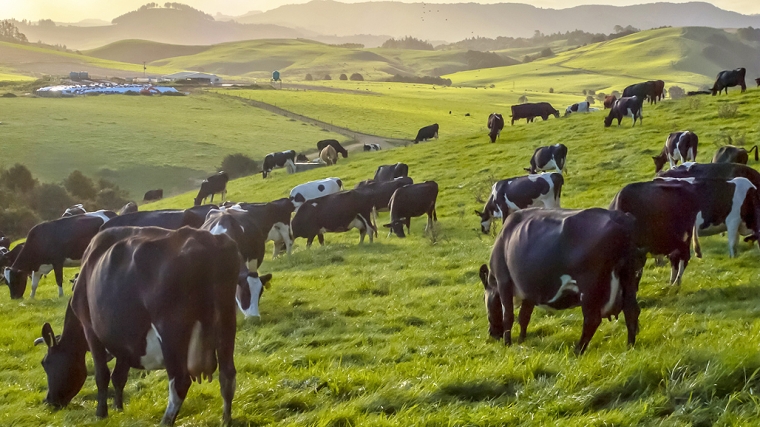
Recent developments have seen significant evolution towards what appears to be a sensible structure for the New Zealand dairy industry, although three big questions remain.
In the last few months Fonterra has announced its desire to get rid of its consumer brand business and agreed a deal with French dairy company Lactalis which will see it receive $4.2 billion in return, plus a long-term supply agreement.
The first question which will be resolved one way or another is whether the shareholders will vote in favour and the Overseas Investment Office approve the deal. The outcome will be known in the first half of next year.
The next question which will not be answered for several years is the future of the Mainland and Anchor brands. Lactalis will not feel the same sense of commitment to those brands, unless they perform to expectations, despite the large sum of money invested in buying them. This inevitably means Lactalis will want to achieve a better return on capital than Fonterra traditionally have from their consumer division. Also corporate manoeuvres frequently entail developments not anticipated at the time of the original deal.
Does this really matter in the long run, always provided New Zealand dairy farmers continue to supply the milk? It is possible the price of milk and butter to the consumer will increase, depending on Lactalis’s production efficiency and profit objectives. It will be interesting to see if Lactalis doesn’t like the regulated price and how Fonterra reacts. It would be ironic if the Commerce Commission, supposed defender of the consumer, had to intervene to protect Fonterra’s raw material pricing structure.
My last question is whether the Dairy Industry Restructuring Act is still fit for purpose nearly 25 years after Fonterra was formed from the merger of NZ Dairy Group, Kiwi Dairies and the Dairy Board which gave the cooperative an estimated 96% of the industry supply.
Only Westland and Tatua elected to remain independent of Fonterra. Westland, unable to survive as a cooperative, is now in Chinese ownership, whereas Tatua continues on its merry way, always posting the highest industry payout to its limited number of shareholders.
Since 2000 several other dairy companies have been formed all of which have remained outside Fonterra, including Open Country, a2 Milk, Synlait, Mataura Valley, Miraka and Oceania. As a result, Fonterra’s share of milk supply has fallen to about 80%, still comfortably the largest, but less like the virtual monopoly it was at the beginning.
The original justification for forming Fonterra was to be the champion of New Zealand dairy internationally creating sufficient scale to compete further down the value chain on equal terms with businesses like Nestle and Danone. Fonterra’s decision to abandon consumer brands and concentrate on ingredients and foodservice is essentially an admission it has failed to realise this ambition.
Open Country has established itself as the clear second largest processor in the country with an estimated 13% share following the acquisition of Mataura Valley and Miraka. Chief Executive Mark de Lautour told me Open Country wants to be the most efficient, lowest cost dairy processor of high value ingredients similar to Fonterra whose new approach he says he can’t argue with.
De Lautour maintains it is virtually impossible to compete without a certain scale in New Zealand, unless a company has a specific market niche like Tatua and a2. He considers the acquisition of Mataura Valley and Miraka is good for New Zealand, as they remain viable businesses in 100% New Zealand ownership. Both will be able to retain their own brand and culture, as they transition to new ownership.
Both plants are strategically beneficial. Mataura Valley is in Southland which is a major area of focus for Open Country, being located near Awarua which is already the company’s largest site. Miraka sits well geographically between the Waikato and Whanganui plants.
Synlait has struggled in recent years but has obtained a large injection of funds from its two major shareholders, while concluding the sale of its underutilised Pokeno plant to pharmaceutical company Abbot Laboratories, the sole customer.
After 25 years subcontracting all its production to Synlait, a2 Milk has bought Yashili’s Pokeno plant which will reduce its dependence on Synlait as well as bringing with it two valuable China Label Infant Milk Formula product registrations. This acquisition casts doubt on the long-term relationship with Synlait despite a2’s 19.83% shareholding, although meanwhile it will continue buying its product.
Apart from Tatua, a2 has arguably the best market position of the whole sector with its single-minded focus on the A2 protein which has enabled it to gain a substantial market share of the Chinese infant formula market, as well as in North America, Australia and locally. However further market diversification is necessary to prevent too much reliance on China.
The New Zealand dairy sector, given its history, appears well balanced: one major company, a strong follower, and a small number of specialist companies each with a narrow product range. Provided the dairy price remains firm, each of these companies can enjoy a profitable future.
One further question is whether New Zealand consumers will feel well served by this stable state or still moan about the price of butter.

We welcome your comments below. If you are not already registered, please register to comment.
Remember we welcome robust, respectful and insightful debate. We don't welcome abusive or defamatory comments and will de-register those repeatedly making such comments. Our current comment policy is here.